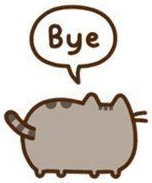The Discrete Cosine Transform (DCT): Theory and Application p. 16
DCT = Discrete Cosine Transform
DFT = Discrete Fourier Transform
KLT = Kamunen-Loeve Transform
At this point it is important to mention the superiority of DCT over other image transforms. More specifically, we compare DCT with two linear transforms: 1) The Karhunen-Loeve Transform (KLT); 2) Discrete Fourier Transform (DFT).
The KLT is a linear transform where the basis functions are taken from the statistical properties of the image data, and can thus be adaptive. It is optimal in the sense of energy compaction, i.e., it places as much energy as possible in as few coefficients as possible. However, the KLT transformation kernel is generally not separable, and thus the full matrix multiplication must be performed. In other words, KLT is data dependent and, therefore, without a fast (FFT-like) precomputation transform. Derivation of the respective basis for each image sub-block requires unreasonable computational resources. Although, some fast KLT algorithms have been suggested, nevertheless the overall complexity of KLT is significantly higher than the respective DCT and DFT algorithms.
In accordance with the readers’ background, familiarity with Discrete Fourier Transform (DFT) has been assumed throughout this document. The DFT transformtion kernel is linear, separable and symmetric. Hence, like DCT, it has fixed basis images and fast implementations are possible. It also exhibits good decorrelation and energy compaction characterictics. However, the DFT is a complex transform and therefore stipulates that both image magnitude and phase information be encoded. In addition, studies have shown that DCT provides better energy compaction than DFT for most natural images. Furthermore, the implicit periodicity of DFT gives rise to boundary discontinuties that result in significant high-frequency content. After quantization, Gibbs Phenomeneon causes the boundary points to take on erraneous values.
'Cat.Storage > SubCat.Research' 카테고리의 다른 글
| Nearest Neighbor Search (0) | 2016.02.16 |
|---|---|
| ISO preference curves (1) | 2015.10.27 |
| Expressions for Paper (0) | 2015.09.02 |
| Feature vector in image processing (0) | 2015.08.15 |
| Real-time infinite texturing from example - writing reference (0) | 2015.08.10 |



